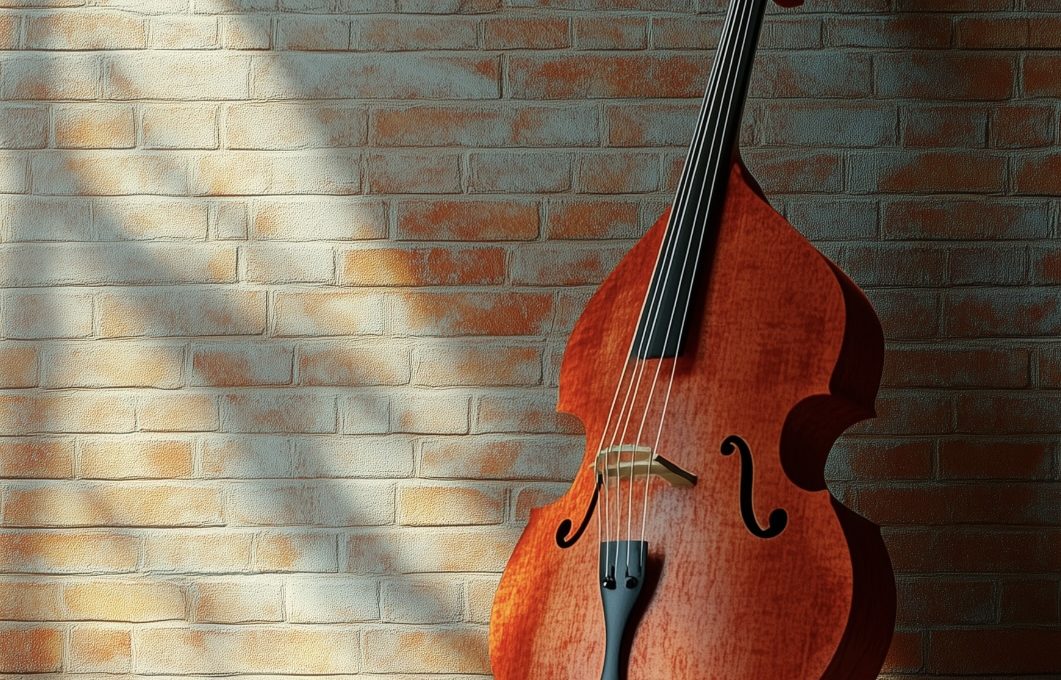This fall semester, I have been on a mission to learn more about the double bass and the people who play this instrument. The amount of variety in the size and shape of the instrument itself is incredible. Combine the instrument’s variation with all the various sizes and shapes of the humans who play it and you arrive in a situation where there is no one strategy that works for everyone. I have been extremely fortunate to be able to observe bass studio and bass technique class with the students of Tracy Rowell at Oberlin Conservatory. Here are some things that flutists can learn from double bassists.
1) Have a plan for carrying your “stuff.”
Bassists have to bring the bass, the stool, the bow and all the other stuff. They have a variety of wheeled contraptions to hook up to the bass so that they can wheel it instead of carry it. Some have figured out how to strap the stool onto the bass/wheeled device. Generally, they don’t arrive with 400-pound backpacks stuffed to gills like flute players often do. Moving a big instrument up and down the stairs when the elevator isn’t working, into the car, on and off the stage, down the street to get to the performance venue, etc., are all opportunities for injuries to happen. The bass is heavy and unwieldy. They need to have a plan that involves not carrying extra stuff.
Flutes are small and easy to fit into a bag. I recommend a backpack style bag that attaches to your body over both shoulders instead of a bag that is only on one side. Take out the books and music that you’re not working on at the moment. You don’t have to have everything you own in one bag, like a middle school kid who carries every textbook because they don’t want to go to their locker.
If you are playing big flutes, figure out a way to carry them that doesn’t set up you up for injury. Maybe you can put them in a wheelie bag and pull them behind you. Maybe you have to make more than one trip. I’ve seen people at the NFA Convention with all sorts of wheeled devices for carrying these instruments.
2) Figure out what your ideal set-up is and bring what you need to make that happen.
Bassists can choose to play while seated on a stool or standing. Many (most) do both depending on the situation. When they are seated, the stool needs to be exactly the right height so that they can have the contact point between the bass and their body exactly where they want it and still have the ability to hinge at the hip joints when they need to move up into thumb position (when they are playing at the end of the fingerboard closest to the bridge). Many bassists like to have something under their left foot, like a yoga block, to raise the floor up. This allows them to use their knee behind the instrument to shift it as necessary. The other foot needs to be firmly on the floor. Both of their rocker bones (bottom of the pelvis) need to be in contact with the stool. Some have multiple yoga blocks under the left foot and another one under the right foot. Whatever—they figure it out and then come up with a plan for how to transport the extra stuff. Some have figured out how to stick the yoga blocks into the stool and then strap the whole thing onto the bass. They are an extremely creative folk.
So, for us flutists, when standing, there’s really no reason to not have good contact with the floor. If you’re playing a contra or a vertical bass flute, make sure you’ve got the instrument placed where you want it relative to your body. When we play seated, the chair itself often forces us back off of our rocker bones. We end up in a C-shaped position that I call the “kidney bean.’ In this position, both breathing and arm movement suffers. There are two Flute Examiner articles about all the different ways you can alter the chair to make it fit your body better. Sitting 101 (https://thefluteexaminer.com/sitting-101) and More About Chairs (https://thefluteexaminer.com/more-about-chairs).If you need to bring a seat cushion, do it. It’s your responsibility to bring what you need to have to your lesson, rehearsal, and/or performance.
3) Bassists are concerned with phrase shape, tone color, and vibrato choices.
We are too. Why should it be any different? There were two times during my observation of bass lessons when student comments referenced the flute: “Play that like a flute would play it.” Hmm…who knew that bassists were copying flutists?
4) Bass orchestral excerpts are hard.
I listened to several students play the required excerpt list for regional orchestral auditions in our area. I don’t know them; I am a flutist, after all. But they were all wicked hard. Either very fast or very high or both. Flute orchestral excerpts are also challenging. It seems like everybody’s list is made of the absolutely hardest thing to do on the instrument. No matter what the instrument is, the performer needs to understand what else is happening in the orchestra at the same time as the excerpt.
Setting tempi is just as challenging for bassists as it is for flutists. It’s hard for bassists to switch gears and play the excerpts in a different order. One practice suggestion that I thought was brilliant was to randomly pick an order using a random sequence generator on your phone, record the excerpts, go eat lunch, come back and listen to the recording. Take notes about what you heard and liked and what you heard that needs some cleaning up. Repeat the whole exercise in the afternoon/early evening with a new random sequence.
5) They play Bach too!
Double bassists love the Bach cello suites. They are beautiful pieces of music. Same shaping, same style, same phrasing as we do, although they don’t need to worry about where to breathe.
6) Scales on the bass are like “choose your own adventure.”
So, it turns out that there are 152 ways to play a three-octave G Major scale on a double bass. This blew my mind. For wind instruments, we play the thing. End of… meh. On the flute, a G-Major scale is a G-Major scale. Maybe you use alternate fingering for high F#, but otherwise, your options are pretty limited.
This is a totally different experience on a string instrument. What string do you start on and with what finger? When do you hop to the next string, and again, with what finger? Listening and watching various G-Major scale fingering patterns made me very thankful that we don’t have to work this hard. However, it also made me think that there is zero excuse for not knowing your scales and arpeggios as a flutist. There’s really only one way to do it, with the exception of some alternate fingerings for high stuff.
7) Bassists sing melodies and intervals very well.
This is not a surprise, as string players have to hear the sound they want in their heads before they play. It’s not as easy as just plopping down the correct fingers and taking what comes out. I have a feeling that if more flutists could sing their phrases more accurately, they might play with better intonation.
Assume that the flutist knew how to physically adjust pitch for notes on the flute. For a string instrument, it’s about placing the finger correctly on the string. For a wind instrument, the air speed, direction, shape of the embouchure, air quantity, shape of the oral cavity, etc., are all in play in terms of altering the pitch of the notes we’re playing.
8) Lastly, they have some really great solo pieces.
One of the students played, “Elegy No. 1 in D Major” by Giovanni Bottesini, and it was beautiful. As I was listening, I thought it would be a stunning piece for alto flute and piano. Bonus – it was available on IMSLP! It’s now on my to-do list!

